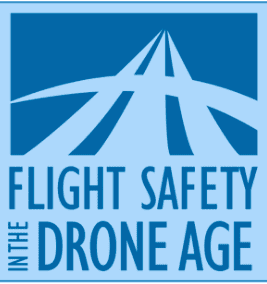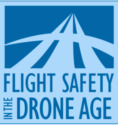
Flight Safety in the Drone Age (FSDA) has been released by the Aviators Model Code of Conduct Initiative’s Permanent Editorial Board.
The publication offers voluntary guidance to advance the safety of flight when operating near unmanned aircraft also known as drones or remotely piloted aircraft (RPA).
 The product of peer review within the manned and unmanned aviation communities, it builds upon the foundation of the Aviators Model Code of Conduct (AMCC) initiative, according to officials.
The product of peer review within the manned and unmanned aviation communities, it builds upon the foundation of the Aviators Model Code of Conduct (AMCC) initiative, according to officials.
As drones become more common, and as recreational, commercial, and public drone applications proliferate, manned aircraft operators face new challenges. There are now more registered drone operators than manned aircraft pilots, and the likelihood of midair collisions is increasing, officials noted.
Safety standards, rules, and guidelines for drone operators are available and continue to be refined, but guidance for pilots flying aircraft in the vicinity of drones is sorely lacking.
Training and safety regimes for manned aircraft are well-defined, data-driven, and rigorously implemented and validated, but they include nothing material with regard to drones.
While general in nature, the FSDA assumes that pilot awareness and response are necessary where drone safety technologies and rules may not yet have been developed fully or implemented effectively.
The guidance is organized in five sections (presented by phase of flight, not necessarily in order of importance): (1) General Education and Preparation, (2) Preflight Operations, (3) In-flight Operations, (4) Post-flight Operations, and (5) Advocacy.
Complementing the FSDA is a safety awareness poster and an annotated technical paper providing analysis, perspective, and support.
Initiative officials note that the FSDA is a living document and will be periodically updated to reflect changes in standards, practice, and the aviation environment. The initiative’s drone-related materials are at SecureAv.com/Drones.

DJI’s Spreading Wings S-1000 RPA
“Helicopters operating in the low-level environment are particularly at risk from these ‘flying cameras’ intent on getting the best picture,” said Nick Mayhew, chair of the US Helicopter Safety Team (USHST) Training Working Group. “I fully support AMCC’s sensible approach to educating our rotary pilots.”
FSDA is the latest work product from the AMCC Initiative. Prior publications include a family of aviators’ codes of conduct addressing aviation maintenance technicians, aviators, flight instructors, glider aviators, helicopter pilots, light sport aviators, seaplane pilots, and student pilots.
Developed as a volunteer effort, each is available as a free public service along with supporting materials at SecureAv.com.

Source: http://generalaviationnews.comModel Code of Conduct released for pilots flying near unmanned aircraft